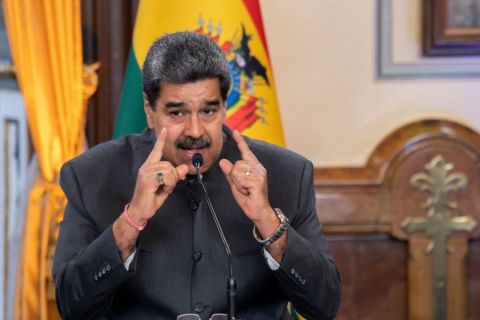Hi, I am Nissa Darbonne, executive editor at large, visiting at DUG Haynesville 2023 with Alan Smith, president and CEO of East Texas Haynesville-focused Rockcliff Energy.
ND: Alan, thanks for joining us here today. You're producing 1.2 Bcf/d now, and a lot of conversation here in Shreveport has been about LNG current export capacity and what's coming online. So we're at 14.1 Bcf/d of current export capacity, and another 10 Bcf/d is under construction, are at least post-FID [final investment decision], it's going to be under construction.
With that additional LNG demand coming online and anywhere between beginning next year and another four or five years out, where is that additional gas going to come from?
Alan Smith, president and CEO, Rockliff Energy: Well, first of all, good to see you and good to be here. You know, I think the near term, over the next 18 to 24 months of what you described, there's about six [Bcf/d] that are coming online in the LNG world again over that next 18 to 24 months. And when you look at the production and where we are, the components of where that will come from are the Haynesville, the Permian, and the Eagle Ford. Speaking to the Haynesville, if we go back to 2020 when we kind of hit rock bottom with COVID and we look at what's happened since then, we've added 40 rigs from that bottom. And when we did that, we have achieved about four [Bcf/d]. So the Haynesville by itself is producing around 12 Bcf/d, and it's starting to flatten out or gotten pretty flat.
So going forward, I think that that's likely to stay pretty flat. And really the question is ‘now that we have these lower prices, $2 gas, are we going to see rigs get dropped?’ And one of the firms that we know whose asked those questions is suggesting that 15 rigs could easily be dropped in the Haynesville as we go through 2023. And based on what I just suggested, if we have that drop in rigs, I don't think the Haynesville is going to be growing. In fact, it very well may begin to roll over in 2024. So, f you look at the Permian you know, there is definitely associated gas, there's takeaway capacity, but to get the associated gas, there tends to be some processing bottlenecks. So, let's just say there's a Bcf/d that comes out of there, a Bcf/d that comes out of the Eagle Ford. And if the Haynesville is going to be the swing, then we're eventually going to need higher prices that would incentivize more drilling in the Haynesville.
ND: You know, pre-LNG exports in the U.S., just thinking about it at the time you know, it was all about winter. And another point was made here today at the conference about if you take a look, it would happen at gas markets when Freeport went offline last June, didn't come back online until late February, just last month, that was 500 Bcf that didn't move offshore. And that's completely what's skewing the gas markets in the storage number right now.
How much now is the U.S. natural gas market exposed to LNG export capacity in terms of prices in comparison with winter. Is winter still 10 times more important, whether we have one or not, compared with LNG exports, or, are they moving closer to par?
AS: No, that's an excellent point on Freeport, as that indicates the market's a lot tighter than maybe we're reading every day. Because like you said, we would be right at the five year average and the gas tape would look a lot different. It'd be a lot higher. I think your point about our natural gas prices in the United States are likely to converge with international pricing is definitely becoming more of a reality. And I think we can say it's all weather here, but it was really weather over there too, right. Because they also in Europe had a very mild winter and there wasn't a big call on gas. And so instead of having $30 to $50 gas this winter, now that we see where we are today, they're at $13 to $15. So I do think as we get more LNG as you described, we go from this 13 [Bcf/d] or 14 [Bcf/d] now to 20 [Bcf/d] and then onward to 25 [Bcf/d] toward the back half of the decade, we're very likely to see less weather dependency and just where is the price trading more of globally, like oil. And I think you heard that today from one of the presenters that if you get enough LNG out in the market, it's going be more like crude and you're going to have more of an international benchmark which will be affecting all markets.I think we're headed that direction.
ND: Thank you, Alan.
AS: Thank you. Good to see you, Nissa.
ND: And thank you for joining us. For more energy intelligence, continue to tap into hartenergy.com.
Recommended Reading
Exclusive: The Politics, Realities and Benefits of Natural Gas
2024-04-19 - Replacing just 5% of coal-fired power plants with U.S. LNG — even at average methane and greenhouse-gas emissions intensity — could reduce energy sector emissions by 30% globally, says Chris Treanor, PAGE Coalition executive director.
Renewed US Sanctions to Complicate Venezuelan Oil Sales, Not Stop Them
2024-04-19 - Venezuela’s oil exports to world markets will not stop, despite reimposed sanctions by Washington, and will likely continue to flow with the help of Iran—as well as China and Russia.
FERC Again Approves TC Energy Pipeline Expansion in Northwest US
2024-04-19 - The Federal Energy Regulatory Commission shot down opposition by environmental groups and states to stay TC Energy’s $75 million project.
US Orders Most Companies to Wind Down Operations in Venezuela by May
2024-04-17 - The U.S. Office of Foreign Assets Control issued a new license related to Venezuela that gives companies until the end of May to wind down operations following a lack of progress on national elections.





